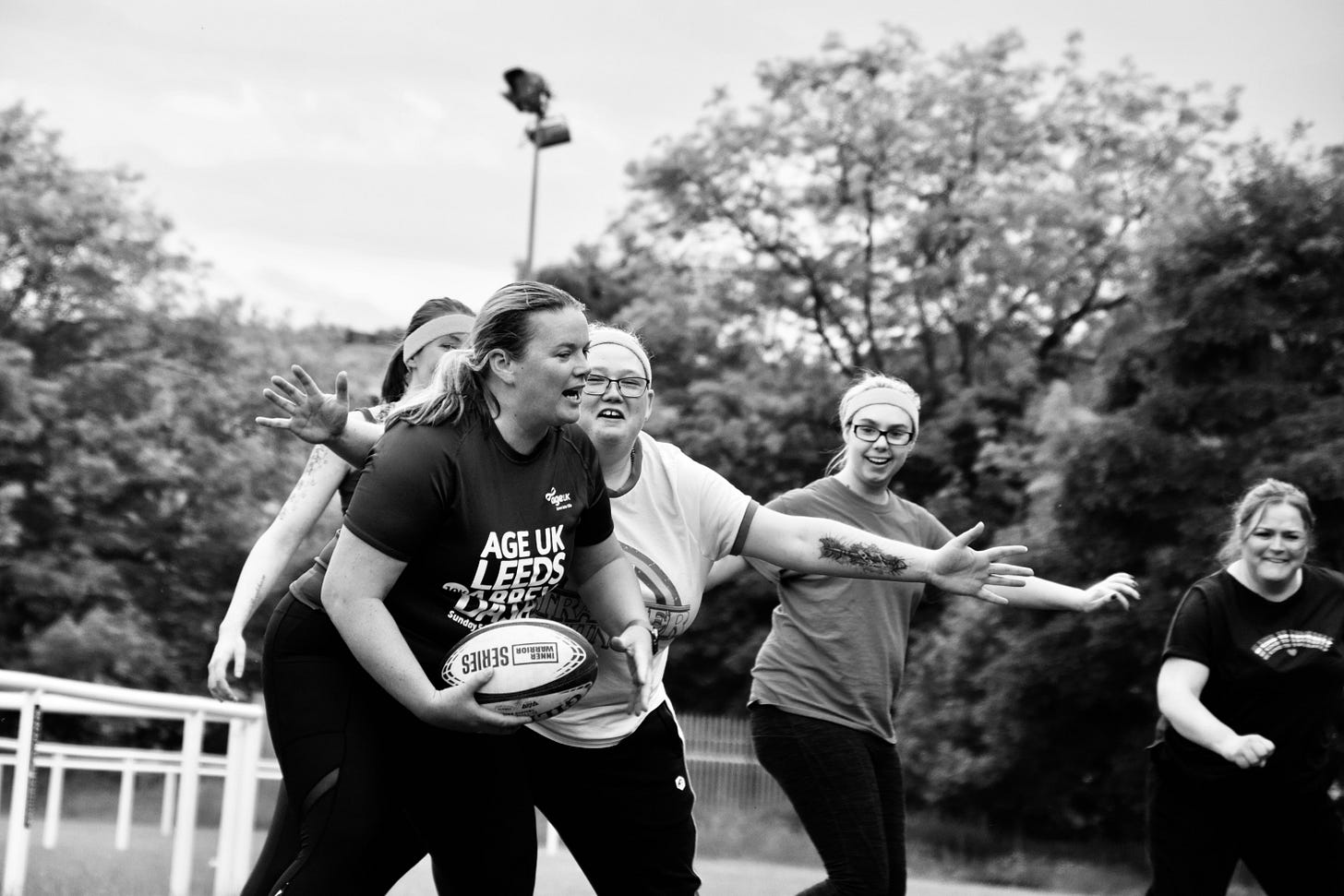Barriers experienced by female players
A study commissioned by ACICS has been the largest of it's kind and examined the gender exercise gap. Here's some of the findings and how it impacts rugby coaching.
Commissioned by ASICS, the sporting goods company, and led by academics Dr Dee Dlugonski and Professor Brendon Stubbs, ‘Move Every Mind’ explores the barriers women experience to exercise. It was a global study and took place in more than 40 countries.
Let’s look at the positives first:
It’s common knowledge that exercise helps people feel better, but let’s look at specifically how women said it made them feel.
41% of women said they felt more able to switch off
52% said they felt happier
48% of women said they felt more confident
It’s no surpise that women feel the benefits of being active . Those involved in the study also reported the negative impacts of not exercising. Women stated that they felt 67% more stressed and 80% more frustrated they weren’t regularly exercising.
So what does this mean for coaches? Make your sessions fun. Yes, players come to learn and improve, but those aims don’t disappear in a joyful session.
Discover what a fun session is for your players. Don’t be afraid to ask them, and don’t be suprised if fun feels different for them each week.
One training session, there might be laughter when getting competitive during a wrestling activity. The next week, players might have fun trying out a new skill.
Never be scared to laugh and show the joy that you’re having. Share moments with the players, don’t be a passive observer.
Now let’s look at the negatives:
Almost two thirds of mothers said motherhood was a main reason they had stopped doing regular exercise. Gender inequality and expectations in household work contribute as a major factor in why women’s activity levels are low.
What’s most interesting is the different perceptions men have compared to what women state they experience:
34% of men believe lack of time is an issue. However, 74% of women reported lack of time to be a barrier for them exercising.
58% of men believe body insecurities are a barrier. Instead, 36% of women said it prevented them from exercising.
So what does this mean for coaches? Above all, be understanding that players may struggle to come to training even though they want to. I think one of the worst things we can do as coaches is make people feel bad for not attending training or being late.
If we create a guilt-driven environment, players may switch off and not turn up at all. Instead, let’s form an environment which is lead by understanding. Players will feel supported.
Get players immediately involved in the wider group if they turn up late. Instead of a punishment or inquisition, welcome them and get them part of the session straight away.
Players might be late due to circumstances they can’t control. It might be work, childcare or a number of other reasons. Criticism directed towards players means those who are running late may decide not to turn up at all.
What we can do:
The report goes into some bullet points about what coaches and clubs can do to help get more women increasing their levels of activity:
Creating accessible, affordable, safe and inclusive spaces for women within sport and exercise
Educating everyone about the specific needs of girls and women
Using visual representations of real women
Challenging gendered expectations for girls and women
Let’s briefly tackle each of these:
Creating an inclusive space is vital. I think the first steps have to happen on pitch. Creating joy and not punishing people goes a long way.
Women also need to feel like they’re not interlopers within men’s space. Instead, a clubhouse and training facilities needs to not feel like the women are an addition but fully included.
Education around the specific needs of W&Gs will also help make sport safe and accessible for women. However, it is not the responsibility of the players to educate coaches and other stakeholders.
If you’re a coach, seek out some learning. In the off-season choose some female-specific CPD you can do to help upskill yourself. It will benefit your players and make you a better coach.
More needs to be done to support clubs and coaches so that they have access to female-specific health topics.
Women need to see real women being active. Use your players to help promote the team. Use photos of them at training or videos of them playing.
Not only will this help increase the visibility of your team, but it will make your players feel like they’re superheroes. It can inspire current and future players and counter perceptions that women can’t be sporty.
With thanks to Women in Sport



